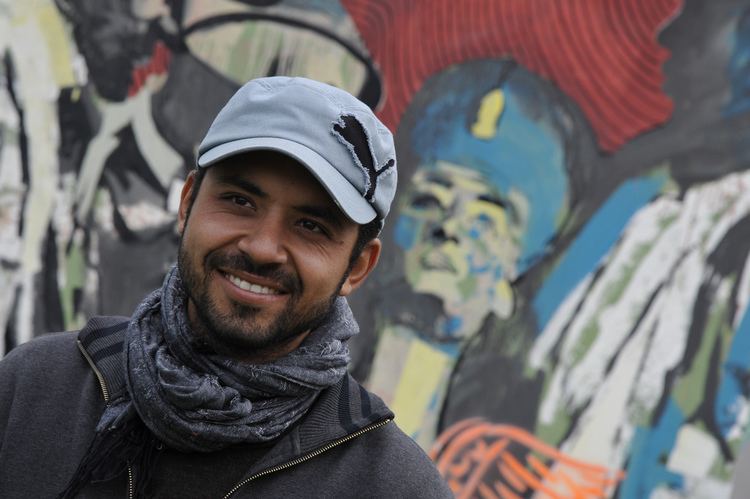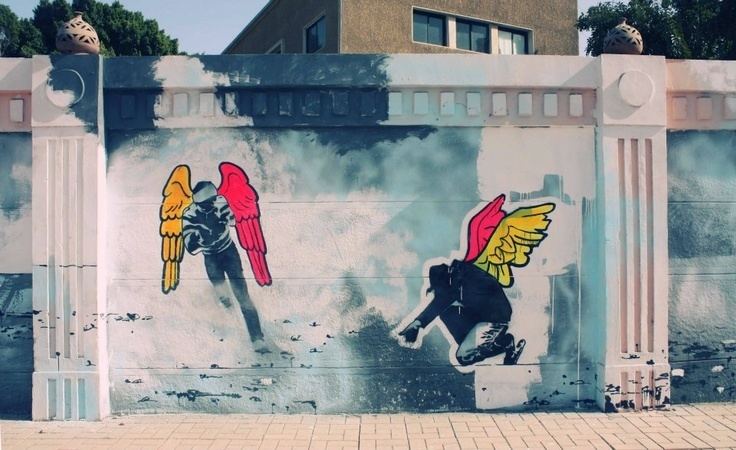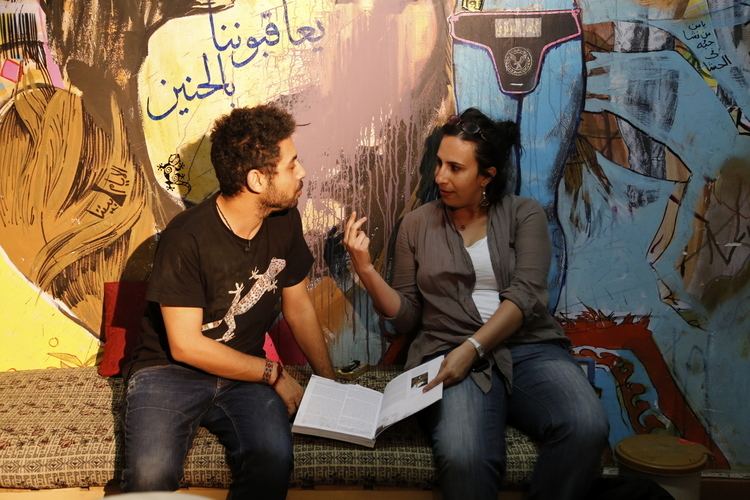Full Name Ammar Abo Bakr Name Ammar Bakr | Profession Artist and professor Alma mater Luxor University | |
 | ||
Born February 14, 1980 (age 45) ( 1980-02-14 ) Known for Mohamed Mahmoud graffiti, street art, graffiti | ||
Ammar abo bakr bombs
Ammar Abo Bakr is a well-known muralist and graffiti artist in Egypt. His work depicts the Egyptian Revolution of 2011, Egyptian history, and Islamic culture. Throughout the revolution, Ammar Abo Bakr painted amidst resistance from the police force, which would cover his art with white paint as a sign of criminal justice. His work often challenges government regimes or injustices and is most famously found on Mohamed Mahmoud Street. However, it can also be seen in other places in Cairo, Alexandria, Beirut, Brussels, Amsterdam, Berlin, Cologne and Frankfurt. In an interview with Sarah Mousa of Jadaliyya, Abo Bakr said, "...While we [artists] strongly oppose the military and want to mark that stance, we love the people and would also like to present art to the people... I want to present something of beauty to people who can see it, see that their streets have beautiful murals and feel joy."
Contents
- Ammar abo bakr bombs
- Checkpoint helsinki short talk with ammar abo bakr sd
- Biography
- His Work
- References

Checkpoint helsinki short talk with ammar abo bakr sd
Biography

Ammar Abo Bakr is a mural artist from Egypt. His works have cased walls in Cairo, Luxor, Alexandria, Beirut, Frankfurt, Berlin, Amsterdam and Brussels.

Ammar Abo Bakr was born on February 14, 1980. He attended Luxor Institute of Fine Arts from 1996 and 2001 where he studied painting. Beginning in 2004, Abo Bakr began researching the Egyptian people, looking for inspiration for his artwork. In addition to creating his own graffiti pieces, he was a professor at the Luxor Institute of Fine Arts where he attended school.
His Work
Ammar's work depicts the history of Egypt, Islamic culture, and the Egyptian Revolution of 2011. Some of his most well known murals were on Mohamed Mahmoud Street which is close to Tahrir Square where the January 25 revolution occurred. His work is inspired by what is going on in the country at the time and by what society wants.
Since his work often goes against the government, it can be dangerous when creating these works or murals. He sometimes has to take time off in a certain location because he knows of many family and friends who have gone to prison.
During and shortly after the Egyptian Revolution of 2011, Ammar was busy putting graffiti on anything he could find. Other artists and activists were also writing on public spaces, so not only were they sending messages to the government, but they also were keeping up a dialogue among themselves and responding to other artists' graffiti work. His work on Mohamed Mahmoud Street was especially important because this street connects Tahrir Square and the Ministry of the Interior. The graffiti on this street served as a "newspaper" of what was happening during the revolution. When writing about his work, Abo Bakr noted, "What we did in Egypt in recent years was not about presenting art, at least it wasn't to me: We used walls as a newspaper... Me, I was a fine arts assistant professor. I left the faculty of arts to report on the revolution in the city’s walls."

In 2012, Ammar, along with other artists started the "No Walls" campaign. This campaign was aiming to cover with graffiti all of the concrete barricades that had been put up by the government. The government put barricades up in neighborhoods, which were not only a visual sign of oppression but also inconvenienced the community members because they had to navigate through the barricades. Along with famous artists, many community members helped paint the walls. There were intricate murals or simple paintings of the continuation of the street behind the barricades. The goal of the campaign was to use trompe l’oeil to artistically transform the restrictive barriers put in place by Egypt's Interior Ministry, in order to make it appear as if they were not there.
Ammar is strongly connected with everyday Egyptian people. He credits them for giving him his inspiration and creativity. He also believes that the art in Luxor and Cairo should remain out of galleries because that limits who sees it and because art is constantly changing.
